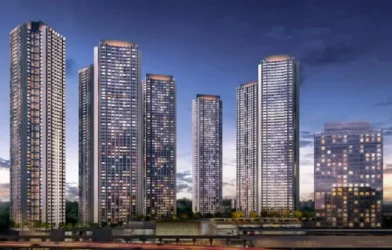Subtotal ₹0.00
Notwithstanding high property prices, home prices are keeping their upward march , supported by strong end-user demand in the premium segment, elevated input costs and a limited supply of quality , ready-to-move-in inventory.
According to PropTiger’s July-September 2025 residential report, the weighted average property price across the top cities registered healthy YoY growth. Delhi NCR led the pack with a remarkable 19% YoY and 9.8% QoQ appreciation, driven by strong demand for luxury properties and infrastructure upgrades. The weighted average price of homes in Delhi-NCR rose from Rs 7479 per sq. ft. in Q3 2024 to Rs 8900 per sq. ft. in Q3 2025.
The highest double-digit price growth of 15% YoY and 12.6% QoQ was recorded by Bengaluru. while Hyderabad recorded 13% YoY and 4.6% QoQ growth.
The price in Bengaluru rose to Rs 8870 per sq. ft. in Q3 2025 from Rs 7713 per sq. ft. in the same period last year while prices in Hyderabad increased to Rs 7750 per sq. ft. in Q3 2025 from Rs 6858 per sq. ft. in Q3 2024.
The other major markets, including MMR, Pune, Chennai, and Kolkata, saw robust single-digit price growth, reflecting broad-based developer confidence and buyers’ willingness to invest in appreciating assets.
| Residential Price Movements across Top 8 cities (Average Price (INR/sq. ft.)) | |||||
| Q3 2025 | Q3 2024 | YoY (%) | Q2 2025 | QoQ (%) | |
| Ahmedabad | 4820 | 4467 | 7.9% | 4728 | 1.9% |
| Bengaluru | 8870 | 7713 | 15.0% | 7881 | 12.6% |
| Chennai | 7173 | 6581 | 9.0% | 7225 | -0.7% |
| Delhi-NCR | 8900 | 7479 | 19.0% | 8108 | 9.8% |
| Hyderabad | 7750 | 6858 | 13.0% | 7412 | 4.6% |
| Kolkata | 6060 | 5611 | 8.0% | 5839 | 3.8% |
| MMR | 13250 | 12383 | 7.0% | 12805 | 3.5% |
| Pune | 7250 | 6651 | 9.0% | 7109 | 2.0% |
As per the report, home sales across India’s 8 prime residential markets of NCR, MMR, Bengaluru, Chennai, Hyderabad, Kolkata, Pune and Ahmedabad, stabilized in the July-September quarter, with a marginal 1% year-on-year dip in volume to 95,547 units sold. On QoQ basis, it registered 2.2% decline. In sharp contrast, the total value of properties sold during the quarter surged by 14% annually to reach INR 1.52 lakh crore, a clear indication of a market shift towards premiumization.
The report also highlighted that new supply across the top eight cities saw a 0.1% annual decline, with 91,807 units launched. However, new launches registered a 9.1% growth over the previous quarter, signalling cautious optimism among developers. This trend suggests that developers are strategically launching higher-value projects to align with the current buyer demand, which is heavily skewed towards the premium and luxury segments.
The new supply was geographically concentrated in the western and southern markets. The Mumbai Metropolitan Region (MMR) was the largest contributor, accounting for 26.9% of all new launches, followed by Pune with 18.7% and Hyderabad with 13.6%. These three cities collectively represented 59.2% of the new inventory introduced during the quarter.
Commenting on the price growth in the NCR housing market, Ashok Kapur, Chairman, Krishna Group and Krisumi Group said, ” The sharp price rise reflects the strong and sustained demand for quality homes due to improved infra and connectivity, coupled with higher disposable income, affordable loan rates and GST reforms. Demand remains particularly robust in the premium segment, driven by the growing appetite of end-users seeking better living standards. Together, these factors are not only reinforcing Delhi-NCR’s position as one of India’s most attractive real estate markets but also paving the way for continued growth and transformation in the years ahead”.













